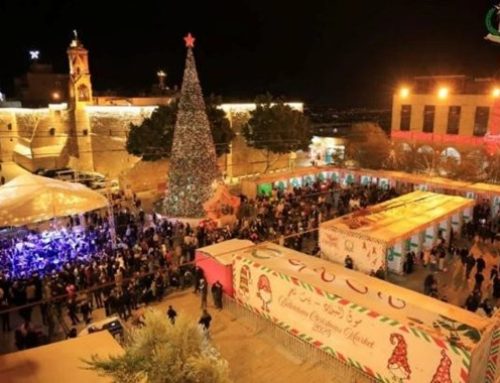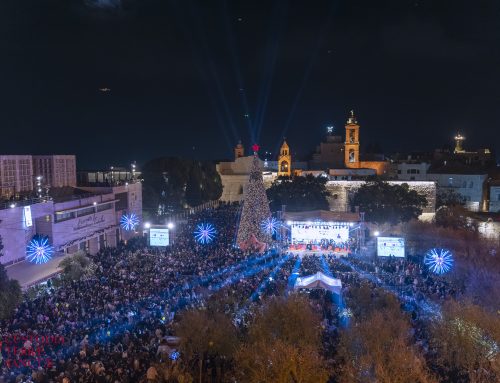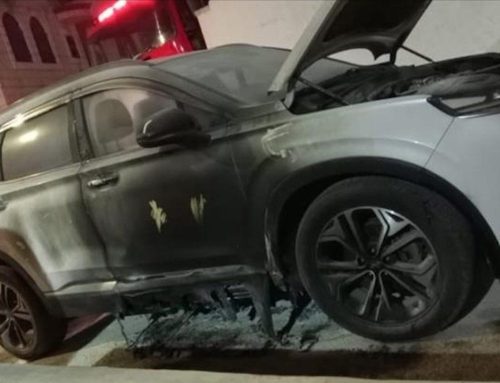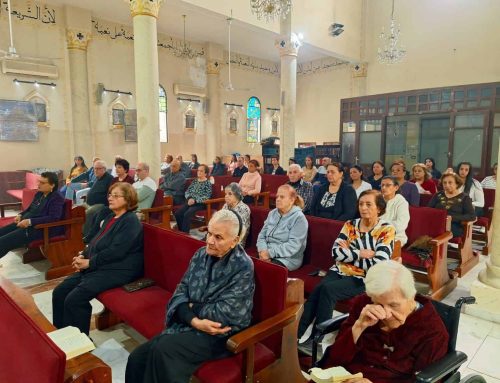The Lord said, “Stand at the crossroads and look. Ask for the ancient paths and where the best road is. Walk in it, and you will live in peace” (Jeremiah 6:16).
The Lord said, “Stand at the crossroads and look. Ask for the ancient paths and where the best road is. Walk in it, and you will live in peace” (Jeremiah 6:16).
The name of the only game in town these days is called the Road Map. The people of the Middle East are asked to play it. The Palestinians, out of a passion for achieving a just peace, immediately accepted the Road Map as presented and agreed to play the game with the hope that it would lead them to the desired goal. The Israeli government with much delay and reticence accepted to play but only after lengthy debate and after receiving assurances from the American administration that its concerns would be taken into consideration. It is still not clear whether the United States’ administration would bow to Israel’s pressure and make substantial changes to the Road Map. There is real fear that such changes would torpedo another important opportunity for peace.
Before presenting Sabeel’s position on the Road Map, it is important to present a faith basis for Sabeel’s position.
The only way to judge the Road Map is through the lens of justice. To insist on doing justice is to be faithful to God, the God of justice. It is only justice that would ultimately yield peace. Unless the United States exerts pressure on Israel to do justice, the Road Map, as its predecessors, will fail and more violence would ensue. Peace and security are the fruits of justice.
Since the Road Map has been presented to both the Israeli and the Palestinian governments, Sabeel has followed with great interest the comments of both sides. When one considers the total picture and the ultimate goals, the Road Map has some positive elements that must be acknowledged. To begin with, it makes clear that the resolution of the conflict would be based on UN resolutions 242, 338, and the Saudi Arabia initiative that was endorsed by the Beirut Arab League Summit. The implementation of these resolutions would result in ending “the occupation that began in 1967”; and lead to the emergence of “an independent, democratic, and viable Palestinian state living side by side in peace and security with Israel and its other neighbors…”. Within such a comprehensive resolution, the Saudi initiative has called for the “acceptance of Israel as a neighbor by the Arab states”. Furthermore, the Road Map has set 2005 as a specific date for the establishment of the Palestinian state.
Another of the potentially positive elements in the Road Map is the presence of a Quartet of powers – United Nations, European Union, Russia, and the United States; it does not leave the United States as the only arbitrator and interlocutor with the two sides. Obviously, Israel prefers to deal with the United States only. As the past has shown, Israel is able to put pressure on the American administration through its friends in the Congress, the pro-Israel lobby, and the American Christian Zionists who number in the tens of millions. Moreover, a careful analysis of the Road Map reveals that the United States enjoys the upper hand within the Quartet. Nevertheless, the presence of the UN, European Union, and Russian representatives will, hopefully, keep the emphasis on the importance of basing the resolution of the conflict on United Nations resolutions.
Keeping the ultimate goal in mind, there are vague and disturbing elements in the Road Map. Although it uses the word “occupation” it does not define it clearly. From our position, the occupation includes all the Palestinian territories conquered by Israel in the 1967 war. Similarly, there is vagueness in defining the borders of the Palestinian state. We know that Sharon has been talking about a Palestinian state recently. His plans, however, envisage a small area of approximately 42% of the West Bank and the Gaza Strip excluding East Jerusalem. In effect the Palestinian state according to Sharon would be comprised of less than 9% of historic Palestine that existed before the establishment of the state of Israel in 1948. Such a state would certainly not fit the criteria of “an independent …and viable … state….” Furthermore, the Road Map does not address the necessity for an enforcement mechanism without which it would simply provide for a “monitoring mechanism”.
Sabeel’s position is to welcome the Road Map as offered by the Quartet for implementation. We are certain that Israel will do its best to change it or even to derail it. As Israel succeeded in obstructing and derailing the Oslo Peace Process, blaming the Palestinians for its failure, it is capable of doing the same with the Road Map. Indeed, the implementation of the Road Map is the litmus test for Israel’s genuine intentions and commitment to peace.
Indeed, on the one hand, there is skepticism and apathy among the Palestinians regarding the Road Map, but on the other hand, there is distrust of the United States and Israel’s commitment to produce a just peace in Palestine. If the Palestinians are assured that by 2005 the Road Map, in spite of some meanderings, will lead to a viable, democratic, independent, and sovereign Palestine state on all the territories occupied by Israel in the 1967 war, and resolve the issues of Jerusalem, refugees, and settlements in accordance with UN resolutions, most Palestinians would enthusiastically support it. It is only then that hope will replace the present apathy and despair, and end the cycle of violence, because the prospect of a just peace will begin to loom in the horizon and the dawn of a new and brighter day for all the people of our land will be anticipated. It is only then that the Road Map would have reached its true destination. It would be the road that leads to life and freedom.
“Enter through the narrow gate; for the gate is wide and the road is easy that leads to destruction, and there are many who take it. For the gate is narrow and the road is hard that leads to life, and there are few who find it” (Matthew 7:13-14).





